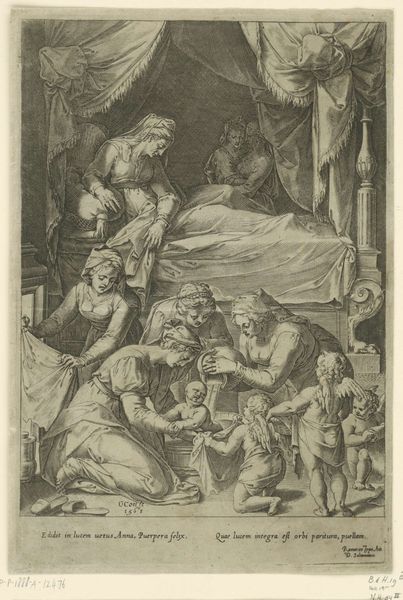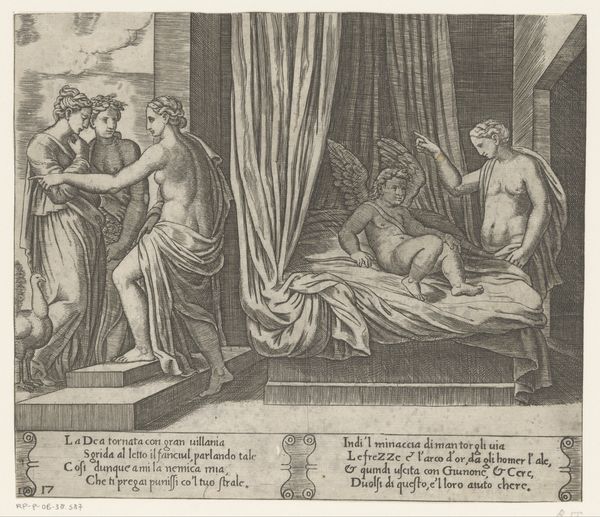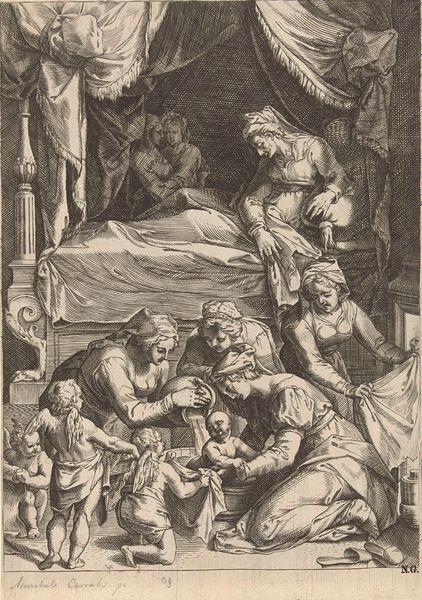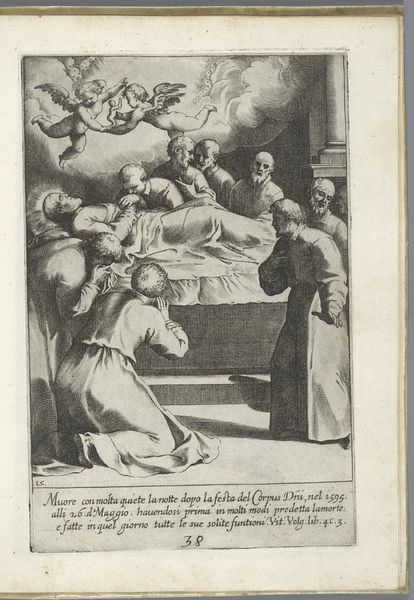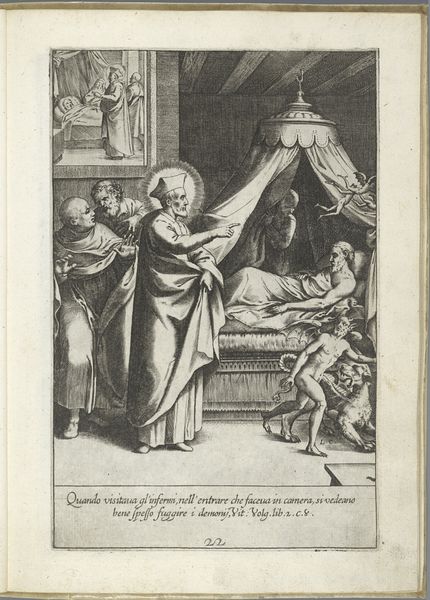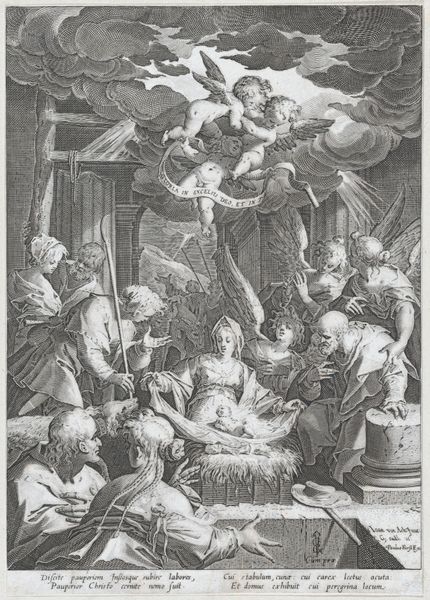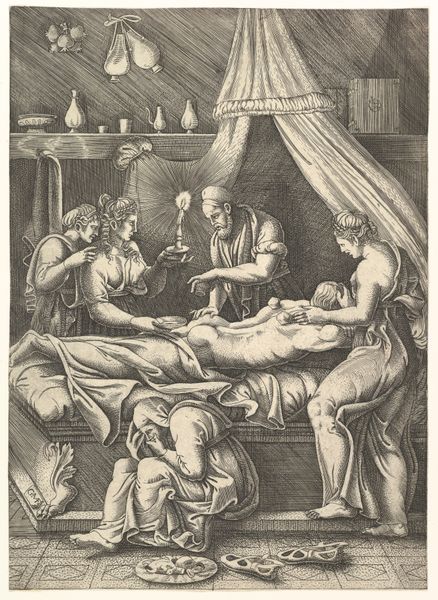
print, engraving
#
narrative-art
# print
#
figuration
#
genre-painting
#
history-painting
#
northern-renaissance
#
engraving
Dimensions: height 108 mm, width 93 mm
Copyright: Rijks Museum: Open Domain
Curator: We’re looking at "The Birth of John the Baptist," an engraving dating from the late 16th century, attributed to Jacob de Weert. Editor: It feels very grounded in a specific, perhaps domestic, space. The texture created by the engraving brings an interesting material quality to the whole scene. It makes you think about the artist working meticulously on the plate. Curator: Observe the composition, how the artist creates a balanced scene. Note the figures arranged across the picture plane, leading our eyes through the narrative: from Elizabeth in the bed, to the bathing of the newborn John. The formal structure highlights the importance of the event itself. Editor: Absolutely, but look closer at the copper plate used for the engraving process. Its affordability allowed broader access to religious narratives beyond the elite. We see skilled craftsmanship being put to use, with engravings becoming vital tools for disseminating ideas widely. This shifts art from being a precious object to a vehicle for widespread visual communication. Curator: That accessibility definitely impacts its reading, and how meaning is disseminated. It reflects Renaissance concerns with spreading humanism. The clear delineation of forms and classically-inspired figures gives the piece an intellectual rigor alongside its pious subject matter. The very sharp detail emphasizes meaning and allegorical significance in all elements. Editor: And within that clarity is the real grit of labor: the making, the printing, the distribution. What materials were available? How were workshops structured? Looking beyond symbolic meaning opens conversations around cultural and socio-economic conditions in early printmaking, the lives and livelihoods of those engaged in it, not just its aesthetic elements. Curator: I agree; examining the print as a confluence of medium and structure enriches understanding. Editor: Definitely; by linking craft with distribution, prints democratized art as both form and commodity. This offers complex and contextualized art experience.
Comments
No comments
Be the first to comment and join the conversation on the ultimate creative platform.
